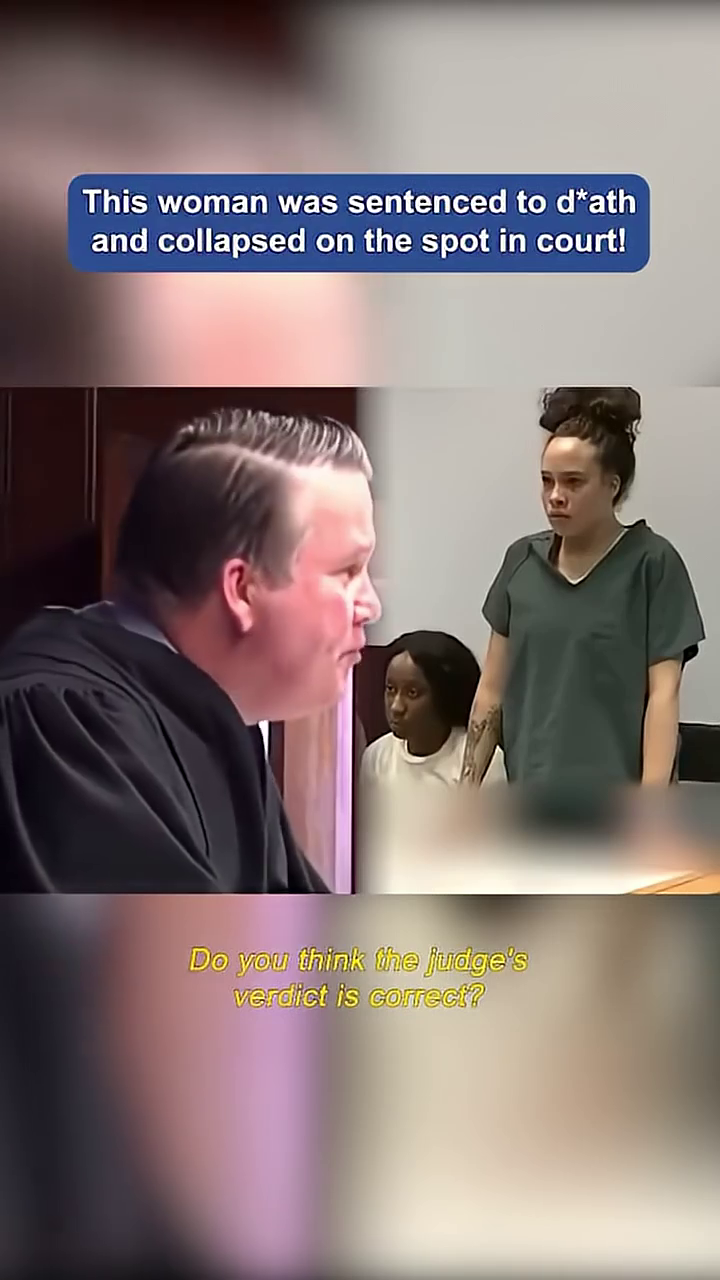The events leading up to the dramatic courtroom scene involving Franecia Torres began on a tragic night in October 2018, in Gwinnett County, Georgia. Twenty-one-year-old William Tunchez lost his life, a victim of felony murder and armed robbery. The investigation that followed led to the arrests of three teenagers: Nicholas Evans, Khalil Miller, and Franecia Torres.
At the heart of the prosecution’s case against Torres was the accusation that she played a pivotal role in the crime, specifically by luring William Tunchez to the location where the fatal events unfolded. This act, whether fully understood by Torres at the time or not, placed her at the center of a grave criminal proceeding, one that would ultimately determine the course of her young life.
The Courtroom’s Grip: Anticipation and Dread
Courtrooms are places where lives hang in the balance, where the meticulous process of law unfolds, often culminating in moments of intense emotion. For Franecia Torres, this was undoubtedly the case. As her trial progressed, the weight of the charges – felony murder and armed robbery – loomed large. These are offenses with severe penalties, including the possibility of lengthy prison sentences, even for those who are still in their formative years.
Every witness testimony, every piece of evidence presented, every legal argument made, built towards that inevitable moment: the reading of the verdict and the pronouncement of the sentence. For anyone facing such a moment, the anticipation alone can be crippling. The future, once a canvas of possibilities, shrinks to a singular point of profound uncertainty.
The Moment of Collapse: Franecia Torres’s Raw Reaction
The video footage, now widely circulated, captures an unforgettable and deeply unsettling moment in the courtroom. It shows a young woman, identified as Franecia Torres, standing as the verdict or sentence is delivered. Her demeanor, initially tense, quickly shifts to one of overwhelming distress. As the words of the court fall upon her, her body language speaks volumes: shock, disbelief, and profound emotional pain.
Then, dramatically, she collapses. It’s not a subtle slumping; it’s a full, visceral giving way to the crushing weight of the sentence. The scene is chaotic and heart-wrenching: legal teams and court personnel rush to her aid, the solemnity of the court momentarily shattered by the raw, human reaction to a life-altering judgment.
The on-screen text in the video sensationally claims she was “sentenced to d*ath.” While Franecia Torres did not receive a capital punishment sentence (Georgia reserves the death penalty for specific, heinous cases, and its application to minors, even those tried as adults, is complex and rarely occurs), the term reflects the profound impact of a very long prison sentence. For a young person, a sentence spanning decades can feel, in essence, like the end of the life they knew, a “social death” that removes them from society for the vast majority of their remaining years. The emotional collapse depicted is entirely consistent with the psychological impact of such a severe pronouncement.
The Legal Aftermath: Understanding Felony Murder in Georgia
Franecia Torres’s case, particularly the charge of felony murder, highlights a crucial aspect of criminal law. In Georgia, as in many other states, felony murder does not require the prosecution to prove that the defendant intended to kll. Instead, it holds individuals accountable for a death that occurs during the commission of certain dangerous felonies, such as armed robbery. If Franecia Torres was involved in the armed robbery that led to William Tunchez’s death, even if she did not pull a trigger or directly inflict fatal harm, she could still be found guilty of felony murder.
This legal principle is designed to deter individuals from participating in dangerous crimes, as all participants can be held responsible for the unforeseen, tragic consequences that may arise. However, for defendants like Torres, it means facing severe penalties for actions where their direct intent to kll may not have been present.
Beyond the Headlines: The Human Cost of Justice
The viral video clip of Franecia Torres’s collapse offers a stark, unfiltered glimpse into the immense emotional toll that the justice system can exact. It forces viewers to confront several difficult questions:
-
The Age of Accountability: Torres was a teenager at the time of the crime. While the law often dictates that individuals of a certain age are tried as adults for severe offenses, her youth raises questions about culpability, maturity, and the potential for rehabilitation.
-
The Impact of Sentencing: What is the true purpose of such lengthy sentences for young offenders? Is it purely punitive, or is there an element of deterrence and rehabilitation? The image of a young person collapsing under the weight of decades in prison is a powerful one, prompting reflection on the balance between justice for victims and the future of offenders.
-
The Role of Emotion in Court: While justice is meant to be dispassionate, courtrooms are undeniably charged with human emotion. The reactions of defendants, victims’ families, and even legal professionals underscore the profound human stakes involved in every trial and sentencing.
-
Systemic Factors: Beyond individual culpability, cases involving young offenders often prompt deeper questions about the societal factors that may contribute to youth involvement in serious crime, including poverty, lack of opportunity, peer pressure, and familial circumstances.
Franecia Torres’s courtroom collapse serves as a potent, if dramatic, reminder of the gravity of criminal proceedings and the life-altering consequences they entail. It pulls back the curtain on the often-abstract world of legal statutes and judicial pronouncements, revealing the raw, human impact of justice delivered. It’s a moment that, for many, transcends the specifics of her case, becoming a symbol of the immense pressure and ultimate finality faced by those standing before the bench.

